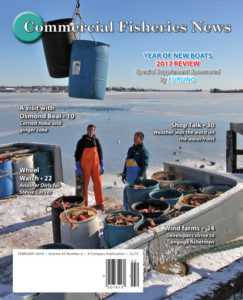Wind chill is a subjective measure of how cold it feels on the skin of humans and animals.
Wind chill is also a measure of the rate of heat loss and, as a result, the temperature we perceive it to be.
If you have the <www.weather.com> app on your mobile device or computer, you probably already know the wind chill temperature is labelled “feels like.”
Nearly 75 years ago when Paul Siple and Charles Passel were in Antarctica, they realized that they felt colder when it was windy.
According to Rachel Arndt, writing for Popular Mechanics, Siple and Passel set up an experiment to test their idea.
They filled containers with water, recorded the wind speed and the time it took for the water to become ice. They were essentially measuring the rate of heat loss of the water.
Siple and Passel continued their wind chill work and developed tables that the National Weather Service used from the ‘70s until 2001.
However, in November 2001, a new wind chill formula and chart were introduced by US, Canadian, and UK scientist members of the Joint Action Group for Temperature Indices.
The new formula and chart incorporate more realistic assumptions, such as:
l The temperature at 5’ above the ground – the plausible height of a person’s face – rather than at 30’, the height of the anemometer on the top of Siple and Passel’s Antarctic hut.
The new wind chill chart also took advantage of the availability of new human face models.
So here we are today with the formula:
Twc = 35.74 +0.6215Ta – 35.75v +0.16 + 0.4275Tav+0.16
Ta is the air temperature in degrees Fahrenheit and v is the velocity of the wind in mph.
So you don’t want to be bothered using the formula each time you want to know the wind chill temperature?
Fortunately, there are charts galore we can choose from.
See the accompanying NOAA chart. As the old charts are still around, check to be sure you are using a current wind chill chart by looking for the date 11/01/01 or the title of the chart.
Frostbite. Anytime the temperature is 32°F or below, there is a danger of frostbite.
The wind chill chart is color-coded to indicate the rate at which frostbite would be expected to happen at a variety of wind chill temperatures. Clearly the colder and windier it is, the more rapid the heat loss, and therefore the more rapid the onset of frostbite.
Frostbite is a serious condition that can result in the loss of fingers, toes, ear lobes, and any exposed skin. The color of the skin indicates the stage of frost bite: The skin first turns yellow or white, then becomes hard and waxy, finally the skin is very hard and probably dark.
As we cannot see when our own faces are developing frostbite, we need to keep watch for frostbite in others.
Frostbitten areas should be warmed up slowly with only slightly warm water (or warm washcloths) because frostbitten areas can no longer sense hot or cold.
Medical websites such as WebMD caution not to walk on frostbitten feet as the pressure may cause damage to the muscles and tendons.
In advanced cases of frostbite, if sensation does not return, medical attention is necessary.
Hypothermia. The clinical definition of hypothermia is when the core body temperature reaches 95°F.
A fisherman who has fallen overboard or is working on deck in freezing, low wind chill temperatures is at risk for hypothermia.
Hypothermia can be a medical emergency. Symptoms include shivering, confused thinking, poor memory, slurred speak, lack of coordination in hands, fatigue.
The thermometer in your first aid box comes in handy at this time. If the fisherman’s temperature is below 95°F, summon emergency assistance right away.
Remove wet clothes, wrap in dry blankets, and warm with skin-to-skin contact. Don’t use anything that is hot.
Shivering may stop at 95°, but that is a warning sign, not a sign of recovery.
Ann Backus, MS, is the director of outreach for the Harvard School of Public Health’s Department of Environmental Health in Boston, MA. She may be reached by phone at (617) 432-3327 or by e-mail at <abackus@hsph.harvard.edu>.
References
Background on wind chill: http://www.popularmechanics.com/science/environment/a14283/the-ridiculous-history-of-wind-chill/ and https://en.wikipedia.org/wiki/Wind_chill
New Wind Chill formula: http://ggweather.com/windchill.htm
Frostbite: https://www.webmd.com/skin-problems-and-treatments/frostbite-how-spot-treat-prevent#1
To get access to more great content like this you’ll need to purchase the
FEBRUARY 2018 issue of Commercial Fisheries News.
Please choose from the following options:
• BUY a Single PRINT edition of CFN that is delivered by MAIL. PRINT EDITION
• Quickly enjoy ONLINE access with our Hi-DEF flip-book. PURCHASE THIS ONLINE EDITION
• Shop the Online ARCHIVE
(Read online flip-book immediately with purchased access key and download a copy for yourself to keep.
Not sure if it works for you? Try a FREE SAMPLE HERE.)
• SAVE BIG when you SUBSCRIBE!






